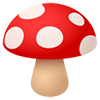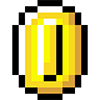
Rogerooo
Members-
Posts
23 -
Joined
-
Last visited
Recent Profile Visitors
The recent visitors block is disabled and is not being shown to other users.
Rogerooo's Achievements

8-Bit Processor (3/7)
7
Reputation
-
Yeah I was trying the way described in the video but since I host the roms on the cloud this is a better workflow for that, it's also cleaner since only one game is installed at a time. Cheers, enjoy the emulator, it's surprisingly stable and a lot of games are already working. Those are the few odd balls I was talking about, but it's strange because it's working for me here, perhaps it's a text encoding thing and the emulator doesn't recognize the string or it might be a faulty rom. If you really want to play the games try to mount them and see what's the name of the application in the icons drawer, then try to type it yourself on the launch parameters. If you are on windows press Win+. keys for a little popup with emojis and special characters like ®™. Cheers
-
Not sure how long it's been a feature has I just found about the emulator but looks like we can also mount zip files without the need to install them to the system drives. We can run the game with the following parameters: --mount <name of the zip> --run <name of the application> --fullscreen I'm currently testing with this method, it might be helpful for rom management and possibly import the games as a regular emulator. EDIT: Looks like we can import and initialize the roms via the zip files, using "--fullscreen --mount" as the emulator parameters however this won't automatically start the game, it will load the emulator's gui and when clicking the game icon it will then launch it in fullscreen. The additional parameter --run <name of the application> seems to be working via cmd (game launches automatically) however it must be specified AFTER the --mount parameter, so in Launchbox we need to specify parameters after the roms path, is that possible? It would also need to be set per game. EDIT2: It seems that %romfile% is the variable to use in Launchbox in order to be able to set additional parameters after the rom path. Here's what I did: - Create an emulator pointing it to EKA2L1 executable (no need to declare parameters as we need to specify them per game) and associate with Nokia N-Gage platform (don't extract the rom). - Import romset as zip files for platform Nokia N-Gage - Edit game -> Launching -> Emulation settings (make sure you are using the emulator), enable Use Custom Command-Line Parameters and set them like so: --fullscreen --mount %romfile% --run "<name of the application/game>" (we must know what's the name of the application, to do that we need to mount the zip file and look for the game's name in the icons drawer, we can do this by launching the emulator and going to File -> Mount game card dump -> Zip, the game will appear, take note of it's name and insert it into the launchbox command) ex: Asphalt: Urban GT --fullscreen --mount %romfile% --run "Asphalt" Still a bit cumbersome but a little more intuitive I think. Not sure about save games though but looks like some data is persisted on the c drive of the emulator. Controls are also kinda clunky, it would be nice to be able to set a per game configuration as well. EDIT3: And to finish off my already extensive post I'll share the command line parameters for the games I've imported. For the most part it's just the name of the game, but there are some odd ones here and there. I should mention that the names are case sensitive, this is especially relevant for the game Colin McRae, where for some reason it creates 2 shortcuts, colin mcrae rally 2005 and Colin McRae Rally 2005, the lowercase works the other doesn't. To be safe just copy the command parameters line for the relevant game and try it out. It's also worth mentioning that I haven't actually run every game, however their shortcut name should be working.
-
Ups, sorry I was browsing both and mixed them up 😳 Thanks for the tip, I actually haven't tried that because it was not mentioned on the documentation pdf but it works flawlessly! Cheers
-
Great theme, i've been using Nostalgia for some time but this is even cleaner and professional looking, well done! When you bind SelectedPlatform.Name to the playlist title shouldn't it retrieve the Nested Name instead of the Unique Name? I'm experiencing the issue where my playlist names are displaying the unique name and would like to get the nested name instead. Is there another binding for that (couldn't find it on the documentation) or should I check some setting?
-
Archive Cache Manager
Rogerooo replied to fraganator's topic in Third-Party Applications and Plugins (Released)
That works as well. I personally just need the platform subfolder in order to use it with Retroarch's Content Folder but users might need other folders for other scenarios. Customization is always great! Are you thinking about replacing symlinks when another game is requested for that particular subfolder? Since the files need to be at the root level of the platform folder there might be conflicts with filenames, deleting all previous symlinks when a game is loaded might help in this regard. -
Archive Cache Manager
Rogerooo replied to fraganator's topic in Third-Party Applications and Plugins (Released)
Cool, thanks for looking into it and by the way, congrats on the plugin, I have my roms stored on the cloud and this is a great caching tool without the need to mess around with custom batch scripts! I'm not sure about the symlinks but I suppose it shouldn't be a problem. If you don't mind I have another suggestion. Be able to customize the path with bindings (a bit like SelectedGame.Platform on themes for example), I'm not sure if they are exposed through the api but it might be useful for different use cases other than Platform. So in practice, the temp folder could be specified something like ".\ArchiveCache\{SelectedGame.Platform}\". Cheers -
Archive Cache Manager
Rogerooo replied to fraganator's topic in Third-Party Applications and Plugins (Released)
Can we extract roms to a path based on platform? For instance, since Dolphin will load NGC and Wii games, I would like to be able to extract them to their respective platform folder in order to give them specific configurations within Retroarch, like setting shaders and core options based on Content Folder. Something like ".\ArchiveCache\Nintendo GameCube\GAME.iso" would be helpful I think. Using Launchbox's default 7z settings, all platform games are extracted to a ".\ThirdParty\7z\Temp" folder and I can't target Content Folder based settings in Retroarch that way as all roms belong to the same Temp folder. -
They are located inside the "StartupThemes" folder, a separate folder from the main "Themes" one. Check Launchbox's root directory. The new pause screens also have their own folder, "PauseThemes".
-
I see, no worries then, I was just curious about them. Thanks for the reply and keep up the great work, love the new startup screen feature.
-
Can we bind custom fields? How do you use them? I would like to attribute a field for file size but couldn't find a way to display it on my theme.
-
Is it possible to use bindings on Playlist views? Something like ActivePlaylist.Name would be very helpful. This is not on the documentation so i presume it's not implemented yet. I really love the BigCouch theme but there are somethings i would like to add to it so i'm "frankensteining" it with some pieces of code to achieve the look I want. Some computer systems are a bit tricky, requiring you to manually type some boot parameters in order to load the games. My memory isn't what it used to be so i need some post-its to remember those commands. This is what i'm doing for those systems, (never mind the instructions, i know those aren't for the Atari 800, it's just a background pic to check size and positioning.): This is for the Platforms view, the 3 help pages (usually just use 1 or 2 depending on how much info is needed) is just an Instructions.png file i put on the root folder of the platform's Images folder. This is the code to load it for the PlatformWheel2FiltersView on BigCouch: <!-- INSTRUCTIONS OVERLAY PLATFORM--> <TextBlock x:Name="InstructionsPlatform" Visibility="Collapsed"> <TextBlock.Text> <MultiBinding StringFormat="{}pack://siteoforigin:,,,/Images/{0}/Instructions.png"> <Binding Path="ActivePlatform.Name" /> </MultiBinding> </TextBlock.Text> </TextBlock> <Image Source="{Binding Text, ElementName=InstructionsPlatform}" Grid.Row="0" HorizontalAlignment="Left" VerticalAlignment="Bottom" UseLayoutRounding="True" Width="873" Height="347" SnapsToDevicePixels="True" Stretch="Fill" /> This works great for platforms, however some systems use several types of media like floppies and cassettes,etc., so for those i create playlists to separate them, this is good for organization inside BigBox and to assign proper emulator's as well. For example, i have 3 distinct MESS emulators (cart, flop and cass) pointing to the same mame64.exe then I add the systems that use those kinds of media to the specific emulator. Like so: Amstrad CPC Emulator | Associated Platform | Default Command-line Parameters -Floppies: MESS (Flop) | Amstrad CPC | cpc6128 -flop1 -Cassettes: MESS (Cass) | Amstrad CPC | cpc6128 -cass Then i just need to choose the proper emulator when importing either cassette or floppy media. However, some systems have different boot sequences depending on the type of media your trying to load so i would like to give instructions for them as well but I need the Bindings for the "playlist view". Is there a way to achieve this without something like ActivePlaylist.Name? EDIT: Never mind ? The ActivePlatform.Name is the correct tag for the binding. I just had to add this block of code after the other one in order to load the Instructions.png from the Playlists folder. (Notice the StringFormat path) <!-- INSTRUCTIONS OVERLAY PLAYLIST--> <TextBlock x:Name="InstructionsPlaylist" Visibility="Collapsed"> <TextBlock.Text> <MultiBinding StringFormat="{}pack://siteoforigin:,,,/Images/Playlists/{0}/Instructions.png"> <Binding Path="ActivePlatform.Name" /> </MultiBinding> </TextBlock.Text> </TextBlock> <Image Source="{Binding Text, ElementName=InstructionsPlaylist}" Grid.Row="0" HorizontalAlignment="Left" VerticalAlignment="Bottom" UseLayoutRounding="True" Width="873" Height="347" SnapsToDevicePixels="True" Stretch="Fill" />
-
Oh, I see. Yes, there is no point in using Mame's RA core after having set up the standalone in LB. Which is not that hard either and is much more easier to configure the machines.
-
@DOS76 @Lordmonkus Cool, thanks for the help. I'll probably not play much of it either but it's cool to have another system to look at in BigBox @neil9000 My issue with Mame in this case is just the filenames, the roms won't load. After getting used to how mame works and loads its systems, etc. I became a fan of it. The huge library of machines available is great and the ability to use overlays/shaders is a nice plus (one of the main reasons why i also prefer RA over standalone). If there was a way to load the games bypassing the name check i would probably use it sometimes. The command line gives me this error message: Error reading input file: file not found Fatal error: Device CD-ROM Image load failed: Unspecified error
-
What about the RA core? Is it good or a standalone emulator is a better option?
-
Hey, sorry to bother again.? I've downloaded a romset of 3DO games but the files don't follow the MAME naming convention, is it possible to load the game without renaming the roms or do I need to rename them? If so, is there an easy method to do it?

